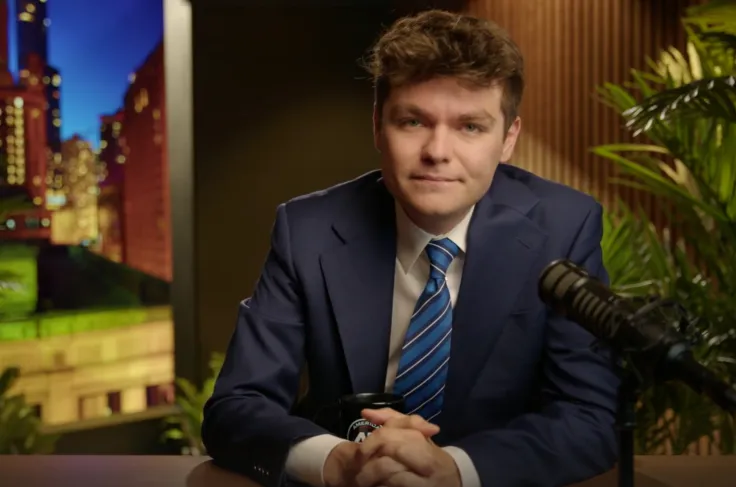Table of Contents
Stepping into the Cantor Art Center’s latest exhibition, “From their Studios,” I braced myself. Artwork created entirely by Stanford faculty – did that mean it would be twice as hard to understand? I gazed around, expecting abstract shapes with esoteric meaning that only Art majors and critics could venture to grasp.
Yet as entrancing designs and striking photographs beckoned me irresistibly forward, I realized my expectations could hardly have been further from the truth. “From Their Studios”—which features 48 works by 13 artists who teach studio art at Stanford—was adventuresome, engaging, intellectually-stimulating, and above all, accessible to students with little or no art background.
Such works include the breathtaking photographs of Robert Dawson, which immerse the viewer in crisp, vivid landscapes overlooking lakes and waterways of Oregon, Utah, and Iceland. Beside these hang equally luminous photos of libraries across the U.S., ranging from the New York Public Library, whose elegant glass windows lend it the look of a European palace, to a wood cabin library within Yosemite National Park, whose squat, modest roof has been drowned in autumn leaves.
As explained in the artist’s written statement, Dawson was inspired by shared public resources. “In an increasingly privatized world,” he asks, “what are the things we have in common?” Among the few that have withstood the test of time, he realized, are the precious commodities of water, books, and knowledge. Indeed, he pointed out, “Libraries are still viewed as a positive expression of government”: they are one publicly-funded project that virtually all citizens, regardless of political persuasion, can support.
Yet photographs represent only one of many media showcased in the exhibition, which also includes short films, paintings, sculptures, prints, interactive new media, and in many cases, a mixture thereof. More significantly, many of the artists defy traditional artistic boundaries by forging into other disciplines – including math and science.
One such pioneer is Gail Wight, whose artwork lies at the crossroad between biology and design. As revealed on her website, Wight has a history of finding daring ways to combine the two; her former projects have included translating EEGs into music, creating a miniature chamber orchestra played by live mice, encasing a human brain in honey, and painting with slime mold. This last project was done by drawing images with oatmeal in agar-filled dishes, followed by waiting for the live slime to consume the oatmeal and follow the path sketched by Wight.
At the Cantor Center, Wight’s most prominent work is a series of large prints, which appear to depict pointillist snowflakes. Upon closer examination, however, one discovers that each snowflake is composed of tiny, shriveled brown bones – the ancient remains of small mammals, reptiles, and amphibians. Wight’s intention, as explained by the written statement accompanying her works, is to reveal the hidden beauty of nature that is “so often overlooked and literally underfoot.”
Perhaps the most interactive artwork belongs to Stanford design lecturer John Edmark, who draws upon precise mathematics to explore the patterns of space and growth. Writes Edmark, “If change is the only constant in nature, it is written in the language of geometry.” At this exhibition, his work includes a table, illuminated by ultraviolet light, upon which visitors can create their own arrangements of glowing neon geometric shapes. A former Artist-in-Residence at the Exploratorium in San Francisco, Edmark explains that he endeavors “to give viewers access to the surprising structures hidden beneath amorphous space.”
Other faculty members whose work is featured in “From Their Studios” include Kristine Samuelson, Terry Berlier, Paul DeMarinis, Kevin Bean, Lukas Felzmann, Enrique Chagoya, Matt Kahn, Jan Krawitz, Joel Leivick, and Jamie Meltzer.
The exhibition is offered as part of Stanford’s Arts Initiative, which—as reflected by the interdisciplinary flavor of “From their Studios” —aims to connect the arts on campus to all fields of study, from engineering to political science.
Admission to the Cantor Arts Center is free, and the museum is open Wednesday to Sunday from 11 AM to 5 PM, plus Thursday evenings until 8 PM. A free lecture series also accompanies “From their Studios,” with one artist speaking each week, usually on Thursdays at 7 PM.
For the burnt-out student in need of motivation, “From their Studios” can provide a refreshing reminder of why we study—to explore, to discover, to invent, and to create meaning. For those seeking an intelligent date location, the exhibit will guarantee an afternoon filled with stimulating conversation. (Plus, you win major sophistication points for taking your date to an art museum!)
And for the student who just wants a relaxing afternoon, the thoughtful documentaries and aesthetically-pleasing artwork of “From their Studios” can ensure a fulfilling few hours as well. Either way, “From their Studios” —on display only through Winter Break—is one sight at Stanford not to be missed.




